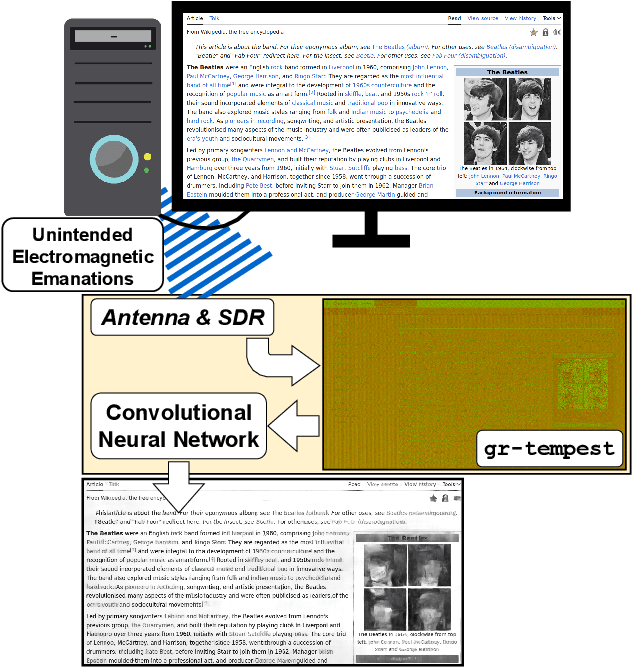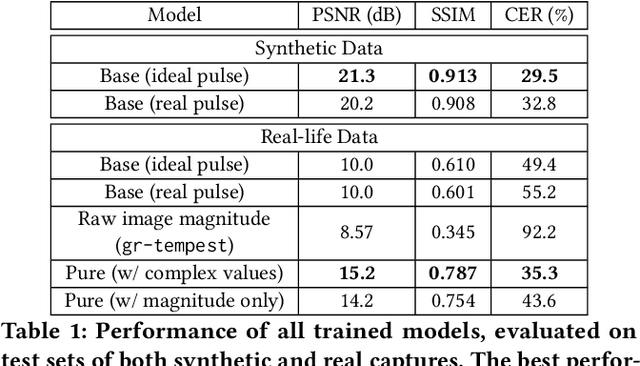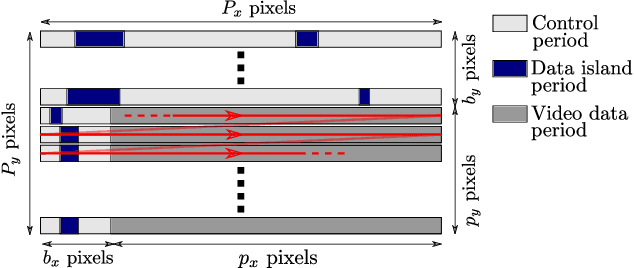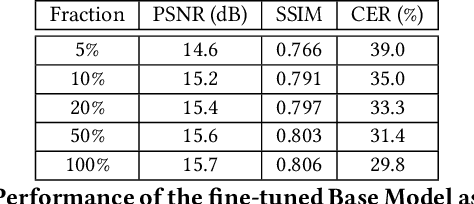Pablo Musé
Graph Contrastive Learning for Connectome Classification
Feb 07, 2025Abstract:With recent advancements in non-invasive techniques for measuring brain activity, such as magnetic resonance imaging (MRI), the study of structural and functional brain networks through graph signal processing (GSP) has gained notable prominence. GSP stands as a key tool in unraveling the interplay between the brain's function and structure, enabling the analysis of graphs defined by the connections between regions of interest -- referred to as connectomes in this context. Our work represents a further step in this direction by exploring supervised contrastive learning methods within the realm of graph representation learning. The main objective of this approach is to generate subject-level (i.e., graph-level) vector representations that bring together subjects sharing the same label while separating those with different labels. These connectome embeddings are derived from a graph neural network Encoder-Decoder architecture, which jointly considers structural and functional connectivity. By leveraging data augmentation techniques, the proposed framework achieves state-of-the-art performance in a gender classification task using Human Connectome Project data. More broadly, our connectome-centric methodological advances support the promising prospect of using GSP to discover more about brain function, with potential impact to understanding heterogeneity in the neurodegeneration for precision medicine and diagnosis.
PhotoHolmes: a Python library for forgery detection in digital images
Dec 19, 2024Abstract:In this paper, we introduce PhotoHolmes, an open-source Python library designed to easily run and benchmark forgery detection methods on digital images. The library includes implementations of popular and state-of-the-art methods, dataset integration tools, and evaluation metrics. Utilizing the Benchmark tool in PhotoHolmes, users can effortlessly compare various methods. This facilitates an accurate and reproducible comparison between their own methods and those in the existing literature. Furthermore, PhotoHolmes includes a command-line interface (CLI) to easily run the methods implemented in the library on any suspicious image. As such, image forgery methods become more accessible to the community. The library has been built with extensibility and modularity in mind, which makes adding new methods, datasets and metrics to the library a straightforward process. The source code is available at https://github.com/photoholmes/photoholmes.
Deep-TEMPEST: Using Deep Learning to Eavesdrop on HDMI from its Unintended Electromagnetic Emanations
Jul 12, 2024



Abstract:In this work, we address the problem of eavesdropping on digital video displays by analyzing the electromagnetic waves that unintentionally emanate from the cables and connectors, particularly HDMI. This problem is known as TEMPEST. Compared to the analog case (VGA), the digital case is harder due to a 10-bit encoding that results in a much larger bandwidth and non-linear mapping between the observed signal and the pixel's intensity. As a result, eavesdropping systems designed for the analog case obtain unclear and difficult-to-read images when applied to digital video. The proposed solution is to recast the problem as an inverse problem and train a deep learning module to map the observed electromagnetic signal back to the displayed image. However, this approach still requires a detailed mathematical analysis of the signal, firstly to determine the frequency at which to tune but also to produce training samples without actually needing a real TEMPEST setup. This saves time and avoids the need to obtain these samples, especially if several configurations are being considered. Our focus is on improving the average Character Error Rate in text, and our system improves this rate by over 60 percentage points compared to previous available implementations. The proposed system is based on widely available Software Defined Radio and is fully open-source, seamlessly integrated into the popular GNU Radio framework. We also share the dataset we generated for training, which comprises both simulated and over 1000 real captures. Finally, we discuss some countermeasures to minimize the potential risk of being eavesdropped by systems designed based on similar principles.
Diffusion models meet image counter-forensics
Nov 22, 2023



Abstract:From its acquisition in the camera sensors to its storage, different operations are performed to generate the final image. This pipeline imprints specific traces into the image to form a natural watermark. Tampering with an image disturbs these traces; these disruptions are clues that are used by most methods to detect and locate forgeries. In this article, we assess the capabilities of diffusion models to erase the traces left by forgers and, therefore, deceive forensics methods. Such an approach has been recently introduced for adversarial purification, achieving significant performance. We show that diffusion purification methods are well suited for counter-forensics tasks. Such approaches outperform already existing counter-forensics techniques both in deceiving forensics methods and in preserving the natural look of the purified images. The source code is publicly available at https://github.com/mtailanian/diff-cf.
Blind Motion Deblurring with Pixel-Wise Kernel Estimation via Kernel Prediction Networks
Aug 05, 2023Abstract:In recent years, the removal of motion blur in photographs has seen impressive progress in the hands of deep learning-based methods, trained to map directly from blurry to sharp images. For this reason, approaches that explicitly use a forward degradation model received significantly less attention. However, a well-defined specification of the blur genesis, as an intermediate step, promotes the generalization and explainability of the method. Towards this goal, we propose a learning-based motion deblurring method based on dense non-uniform motion blur estimation followed by a non-blind deconvolution approach. Specifically, given a blurry image, a first network estimates the dense per-pixel motion blur kernels using a lightweight representation composed of a set of image-adaptive basis motion kernels and the corresponding mixing coefficients. Then, a second network trained jointly with the first one, unrolls a non-blind deconvolution method using the motion kernel field estimated by the first network. The model-driven aspect is further promoted by training the networks on sharp/blurry pairs synthesized according to a convolution-based, non-uniform motion blur degradation model. Qualitative and quantitative evaluation shows that the kernel prediction network produces accurate motion blur estimates, and that the deblurring pipeline leads to restorations of real blurred images that are competitive or superior to those obtained with existing end-to-end deep learning-based methods. Code and trained models are available at https://github.com/GuillermoCarbajal/J-MKPD/.
U-Flow: A U-shaped Normalizing Flow for Anomaly Detection with Unsupervised Threshold
Nov 22, 2022Abstract:In this work we propose a non-contrastive method for anomaly detection and segmentation in images, that benefits both from a modern machine learning approach and a more classic statistical detection theory. The method consists of three phases. First, features are extracted by making use of a multi-scale image Transformer architecture. Then, these features are fed into a U-shaped Normalizing Flow that lays the theoretical foundations for the last phase, which computes a pixel-level anomaly map, and performs a segmentation based on the a contrario framework. This multiple hypothesis testing strategy permits to derive a robust automatic detection threshold, which is key in many real-world applications, where an operational point is needed. The segmentation results are evaluated using the Intersection over Union (IoU) metric, and for assessing the generated anomaly maps we report the area under the Receiver Operating Characteristic curve (ROC-AUC) at both image and pixel level. For both metrics, the proposed approach produces state-of-the-art results, ranking first in most MvTec-AD categories, with a mean pixel-level ROC- AUC of 98.74%. Code and trained models are available at https://github.com/mtailanian/uflow.
Rethinking Motion Deblurring Training: A Segmentation-Based Method for Simulating Non-Uniform Motion Blurred Images
Sep 26, 2022



Abstract:Successful training of end-to-end deep networks for real motion deblurring requires datasets of sharp/blurred image pairs that are realistic and diverse enough to achieve generalization to real blurred images. Obtaining such datasets remains a challenging task. In this paper, we first review the limitations of existing deblurring benchmark datasets from the perspective of generalization to blurry images in the wild. Secondly, we propose an efficient procedural methodology to generate sharp/blurred image pairs, based on a simple yet effective model for the formation of blurred images. This allows generating virtually unlimited realistic and diverse training pairs. We demonstrate the effectiveness of the proposed dataset by training existing deblurring architectures on the simulated pairs and evaluating them across four standard datasets of real blurred images. We observed superior generalization performance for the ultimate task of deblurring real motion-blurred photos of dynamic scenes when training with the proposed method.
A Multi-Scale A Contrario method for Unsupervised Image Anomaly Detection
Oct 05, 2021



Abstract:Anomalies can be defined as any non-random structure which deviates from normality. Anomaly detection methods reported in the literature are numerous and diverse, as what is considered anomalous usually varies depending on particular scenarios and applications. In this work we propose an a contrario framework to detect anomalies in images applying statistical analysis to feature maps obtained via convolutions. We evaluate filters learned from the image under analysis via patch PCA, Gabor filters and the feature maps obtained from a pre-trained deep neural network (Resnet). The proposed method is multi-scale and fully unsupervised and is able to detect anomalies in a wide variety of scenarios. While the end goal of this work is the detection of subtle defects in leather samples for the automotive industry, we show that the same algorithm achieves state of the art results in public anomalies datasets.
Single Image Non-uniform Blur Kernel Estimation via Adaptive Basis Decomposition
Feb 01, 2021



Abstract:Characterizing and removing motion blur caused by camera shake or object motion remains an important task for image restoration. In recent years, removal of motion blur in photographs has seen impressive progress in the hands of deep learning-based methods, trained to map directly from blurry to sharp images. Characterization of motion blur, on the other hand, has received less attention and progress in model-based methods for restoration lags behind that of data-driven end-to-end approaches. In this paper, we propose a general, non-parametric model for dense non-uniform motion blur estimation. Given a blurry image, we estimate a set of adaptive basis kernels as well as the mixing coefficients at pixel level, producing a per-pixel map of motion blur. This rich but efficient forward model of the degradation process allows the utilization of existing tools for solving inverse problems. We show that our method overcomes the limitations of existing non-uniform motion blur estimation and that it contributes to bridging the gap between model-based and data-driven approaches for deblurring real photographs.
Solving Inverse Problems by Joint Posterior Maximization with a VAE Prior
Nov 14, 2019


Abstract:In this paper we address the problem of solving ill-posed inverse problems in imaging where the prior is a neural generative model. Specifically we consider the decoupled case where the prior is trained once and can be reused for many different log-concave degradation models without retraining. Whereas previous MAP-based approaches to this problem lead to highly non-convex optimization algorithms, our approach computes the joint (space-latent) MAP that naturally leads to alternate optimization algorithms and to the use of a stochastic encoder to accelerate computations. The resulting technique is called JPMAP because it performs Joint Posterior Maximization using an Autoencoding Prior. We show theoretical and experimental evidence that the proposed objective function is quite close to bi-convex. Indeed it satisfies a weak bi-convexity property which is sufficient to guarantee that our optimization scheme converges to a stationary point. Experimental results also show the higher quality of the solutions obtained by our JPMAP approach with respect to other non-convex MAP approaches which more often get stuck in spurious local optima.
 Add to Chrome
Add to Chrome Add to Firefox
Add to Firefox Add to Edge
Add to Edge